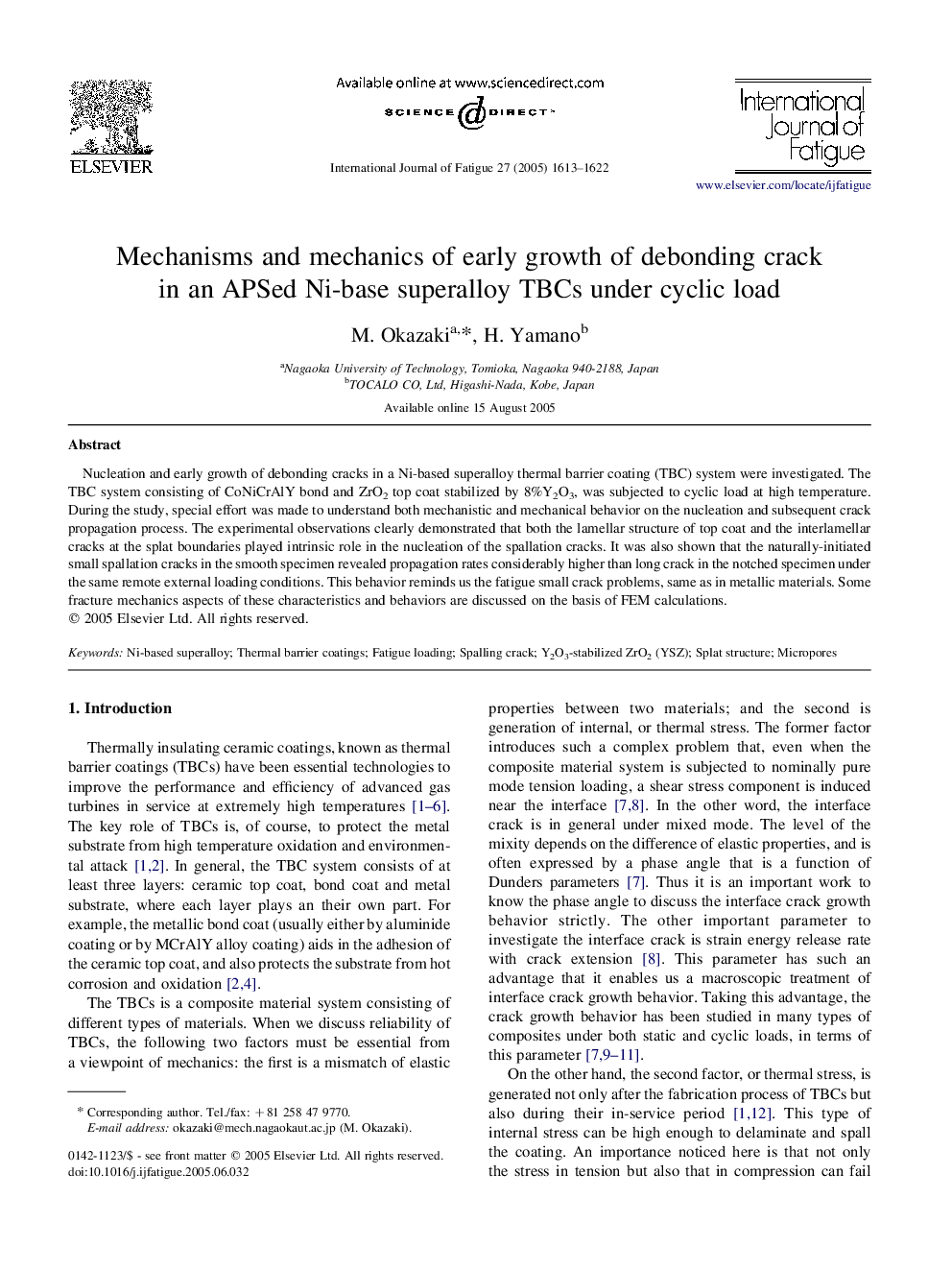| Article ID | Journal | Published Year | Pages | File Type |
|---|---|---|---|---|
| 9703904 | International Journal of Fatigue | 2005 | 10 Pages |
Abstract
Nucleation and early growth of debonding cracks in a Ni-based superalloy thermal barrier coating (TBC) system were investigated. The TBC system consisting of CoNiCrAlY bond and ZrO2 top coat stabilized by 8%Y2O3, was subjected to cyclic load at high temperature. During the study, special effort was made to understand both mechanistic and mechanical behavior on the nucleation and subsequent crack propagation process. The experimental observations clearly demonstrated that both the lamellar structure of top coat and the interlamellar cracks at the splat boundaries played intrinsic role in the nucleation of the spallation cracks. It was also shown that the naturally-initiated small spallation cracks in the smooth specimen revealed propagation rates considerably higher than long crack in the notched specimen under the same remote external loading conditions. This behavior reminds us the fatigue small crack problems, same as in metallic materials. Some fracture mechanics aspects of these characteristics and behaviors are discussed on the basis of FEM calculations.
Related Topics
Physical Sciences and Engineering
Engineering
Mechanical Engineering
Authors
M. Okazaki, H. Yamano,
